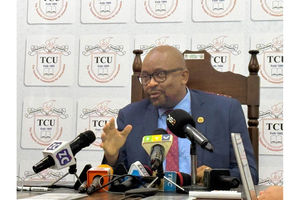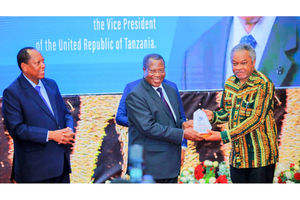Intersex baby born in Kagera, medic confirms

Designated Rubya Hospital’s medical officer in charge George Kasibante.
What you need to know:
- The baby, born on Monday, August 27 was born through the natural procedure, according to Dr Kasibante.
Muleba. Designated Rubya Hospital’s medical officer in charge George Kasibante on Tuesday, August 28 reported of the birth of an intersex--hermaphrodite--baby at the hospital in Muleba District, Kagera Region.
The baby, born on Monday, August 27 was born through the natural procedure, according to Dr Kasibante.
The doctor highlighted, however, that medical inspection was still ongoing to establish which sexual organ, between that of male and female, was more active than the other.
This matter, he said, was yet to be concluded given the fact that the baby had not urinated since its birth and no tests have been conducted.
However, dismissing the feelings that the baby may have any medical problem, Dr Kasibante said that there was no need to worry until the elapse of the first 72-hour circle.
According to him, when hours pass without the baby urinating, then medically there could be a problem.
The baby is scheduled to be referred to either Bugando Referral Hospital in Mwanza or the Muhimbili National Hospital (MNH) in Dar es Salaam for further medical investigations, Dr Kasibante elaborated.
Baby’s mother Flaviana Antidius said that this was her second birth and cleared doubts by saying that there were no any complications both during the pregnancy and during giving birth.
The 24-year old mother thanked God that she delivered safely adding that, “all are God’s plans and we shall receive them with our two hands.”
‘Intersex’ is a general term used for a variety of conditions in which a person is born with a reproductive or sexual anatomy that doesn’t seem to fit the typical definitions of female or male, according to the Intersex Society of America.
For example, a person might be born appearing to be female on the outside, but having mostly male-typical anatomy on the inside.
Or a person may be born with genitals that seem to be in-between the usual male and female types—for example, a girl may be born with a noticeably large clitoris, or lacking a vaginal opening, or a boy may be born with a notably small penis, or with a scrotum that is divided so that it has formed more like labia. Or a person may be born with mosaic genetics, so that some of her cells have XX chromosomes and some of them have XY.
Researches on intersex babies in Tanzania are patchy but according to the Intersex Campaign for Equality, the most thorough existing research finds intersex people to constitute an estimated 1.7 per cent of the population worldwide.




